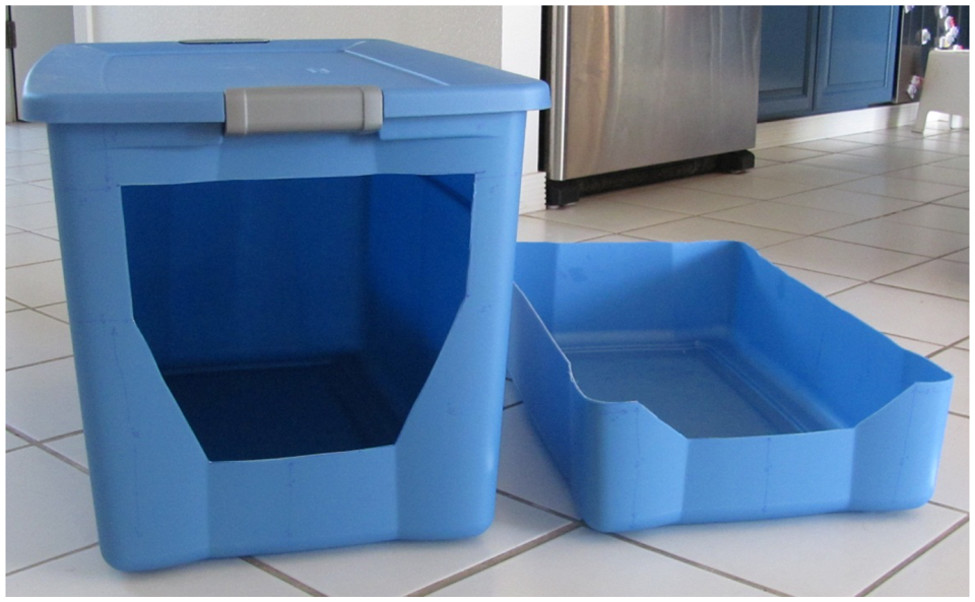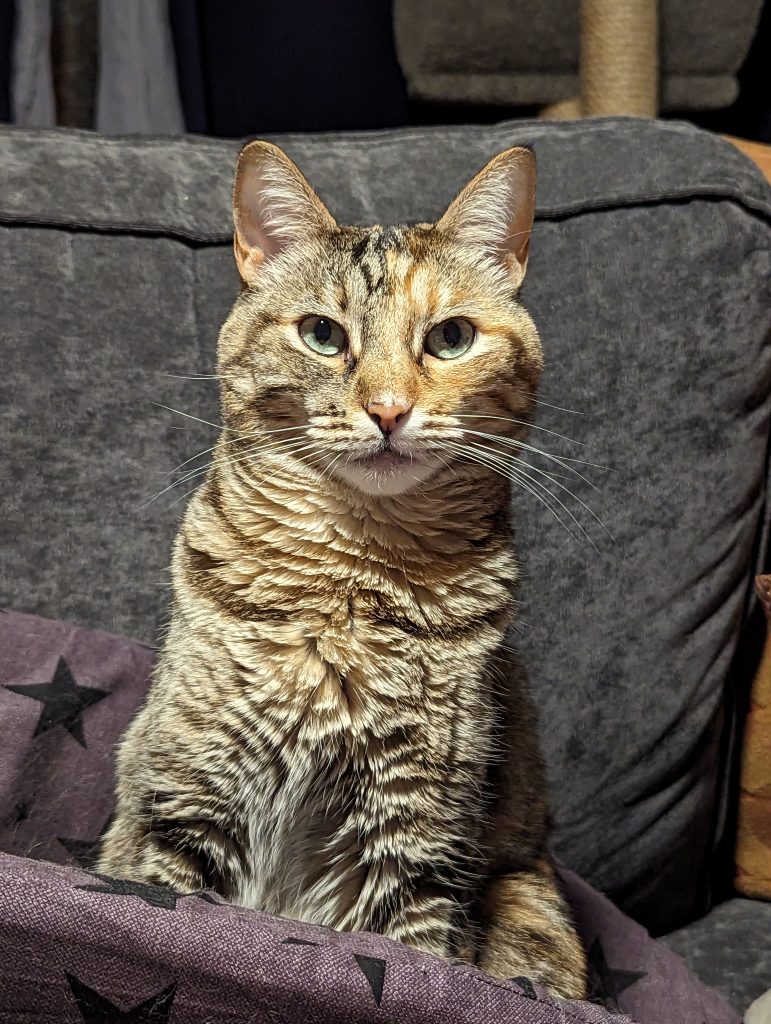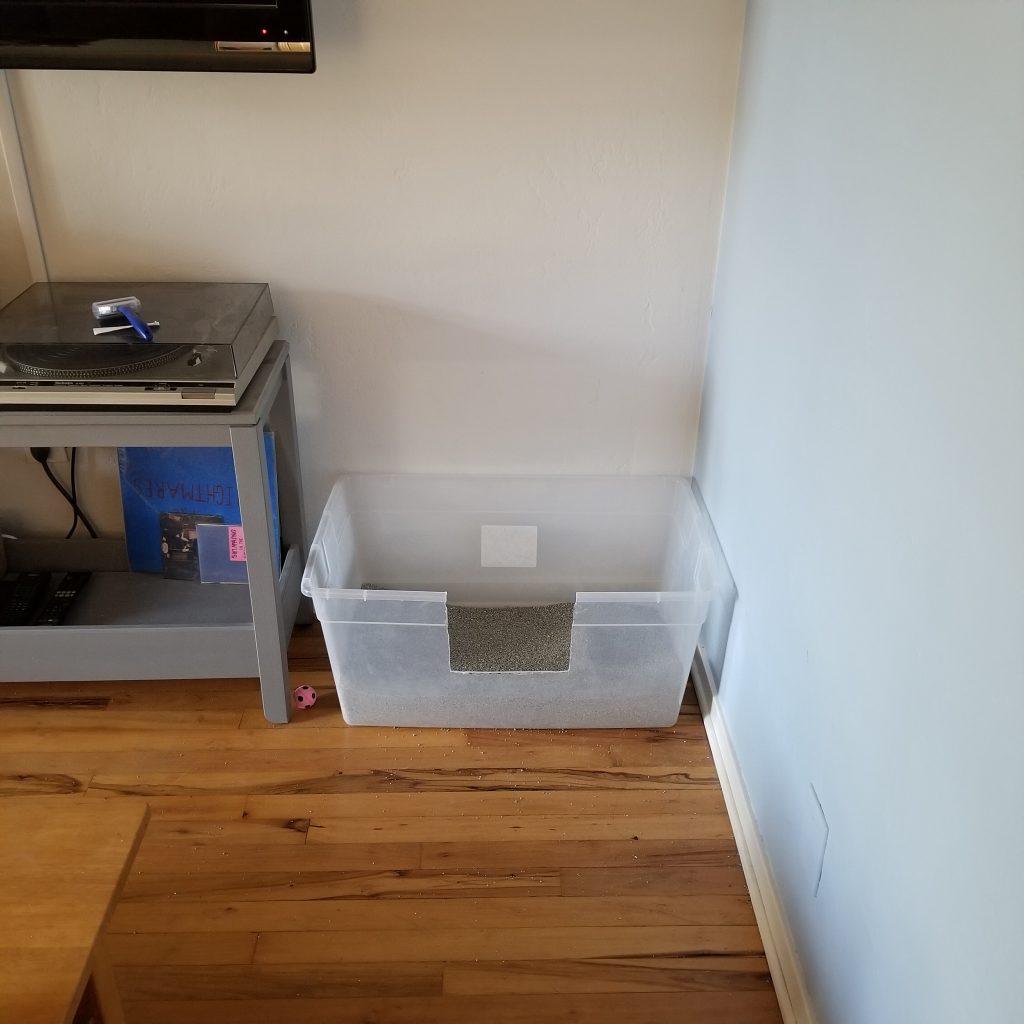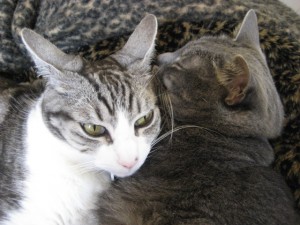I was recently completing some CEUs (continuing education units) as part of my certification requirements (as a Certified Cat Behavior Consultant and Certified Applied Animal Behaviorist) by watching a presentation on litter box avoidance.
As part of the talk, the presenter stated that “we used to believe that cats don’t like hooded litter boxes, however…a 2013 study found that…when all other factors are considered, including how often the box is cleaned and the type of litter…the majority of cats do not have a preference over hooded versus non-hooded litter boxes.”
Now most of us cat behavior consultants do NOT generally recommend covered litter boxes, with a few good reasons (which I will discuss later in this post). This reference to the 2013 study (which was done by a good friend of mine, Dr. Emma Grigg) made me think that this was a good opportunity to review said study, and also talk about:
- why sometimes it’s important to look at a scientific paper ourselves before drawing conclusions, and
- why we have to consider research results in the context of other studies!
Methods
The 2013 study, “Litter box preference in domestic cats: covered versus uncovered” tested 27 healthy, indoor cats with no history of litter box “problems” in their home environments. Each cats was given two litter boxes, constructed from large storage bins; one box had its lid with an entry way cut into it, and the other box had sides that were cut down to about 6” high, with a lower entry way cut into it. Cats who lived in multi-cat households were separated from other cats for the duration of the study (two weeks). The two boxes were placed side by side, and both contained the same clay, clumping-style litter.

Cat owners were instructed to scoop all waste into a bag, which was weighed daily. The researchers then compared the amount of waste in each litter box (covered versus uncovered), at both the group level (all cats) and the individual level. Because clumps of urine can break down easily, individual clumps were not counted.
Results
As cited above, the majority of cats did not show a strong preference for either a covered or uncovered box! The cats amount of waste in the covered boxes and the uncovered boxes was statistically the same. Looking at each cat’s “performance,” 19 cats appeared to use both litter boxes equally. So from this study, can we conclude that all cats are okay with covered litter boxes?
Not so fast! There are a few important caveats that we should consider before we go slapping a bunch of hoods on litter boxes.
Caveat 1: Individual preferences
Even though the cats as a population did not have a strong preference for either box, eight cats in the study did have a strong preference for either a covered (4 cats) or uncovered box (also 4 cats).

It’s important to remember that when we do science, we are trying to make an inference about a population based on a much smaller sample. In this case, we must consider that some cats did have a strong preference, but the only way to know for sure how any individual cat will feel is to give them a choice.
Caveat 2: The size of the box
The researchers in this study provided all cats with litter boxes from storage bins. These bins were LARGE, I’m talking 32.5 inches long, 19.75 inches wide, and almost 19 inches high. To compare, one of the most common covered boxes on this market, which is marketed as “large” is 19.5 x 15.25 x 17 inches (or about half the size of the boxes in the study). The researchers were absolutely correct to ensure that all litter boxes used in the study were the same size. However, it is possible that the cats didn’t care if the box was covered or uncovered because the box was so roomy. Cats may very well feel differently if the covered box is your average, small, commercially-available covered box. (Note: a 2014 study suggested that cats prefer larger litter boxes).
A side note: the data also showed a trend for larger cats (~13 lb plus) to prefer an uncovered box.
Caveat 3: Other cats
The cats in the study were either solo cats or were separated from the other cats they lived with during the study. One of the reasons many cat behavior consultants (including myself) do not recommend covered litter boxes is that they obscure a cat’s view of what is going on around them (including the presence of other cats). It is possible that under different circumstances, the cats may have shown a stronger preference for an uncovered box.
Caveat 4: Scooping frequency
All participants in the study scooped the provided litter boxes daily, which likely made the litter boxes much more appealing to cats. Other research has suggested that cats with covered boxes are much less likely to experience daily cleaning – in fact, covered litter boxes were cleaned closer to once every FIVE days. A more recent study of cat owners in Italy found an association between house-soiling and boxes that aren’t scooped daily.
Takeaways from the study
When cats have a large litter box with clumping litter that is scooped daily, as a population they don’t strong feelings about whether the box is covered or not. Individual cats, especially larger cats, may have opinions!
In general, cats prefer larger litter boxes. In addition, cats prefer clean, frequently scooped boxes. To humans, out of sight may mean out of mind, and the reality is that a covered box is less likely to be scooped daily. A covered box is likely too small for most cats. Since most cats with covered litter boxes will not experience the conditions of the described study, we must be careful when we say that “the majority of cats do not have a preference over hooded versus non-hooded litter boxes.”
Ten quick tips for EXCELLENT litter boxes
- Have at least as many litter boxes as you have cats, plus one
- Use large, open litter boxes
- Make sure the litter box is easy for your cat to walk into
- Use an unscented, soft, clumping-style clay litter
- Avoid plastic litter liners
- Scoop the litter boxes, at least once, ideally twice, daily
- Place litter boxes in quiet, accessible places that provide a vantage point
- Place each litter box in a separate location
- Place litter boxes away from where your cat eats, drinks, and sleeps
- Avoid robot/automatic litter boxes and top-entry litter boxes

References
Grigg, E. K., Pick, L., & Nibblett, B. (2013). Litter box preference in domestic cats: covered versus uncovered. Journal of Feline Medicine and Surgery, 15(4), 280-284.
Guy, N. C., Hopson, M., & Vanderstichel, R. (2014). Litterbox size preference in domestic cats (Felis catus). Journal of Veterinary Behavior, 9(2), 78-82.
Horwitz, D. F. (1997). Behavioral and environmental factors associated with elimination behavior problems in cats: a retrospective study. Applied Animal Behaviour Science, 52(1-2), 129-137.
Padalino, B., Zappaterra, M., Felici, M., Ricci-Bonot, C., Nanni Costa, L., Houpt, K., & Tateo, A. (2023). Factors associated with house-soiling in Italian cats. Journal of Feline Medicine and Surgery, 25(11), 1098612X231202482.



My cat Trixie seems to sometimes “miss” the litter box when she urinates. So I was thinking of getting or making a covered box for her. I’m glad I read this article as I won’t consider the robotic boxes.